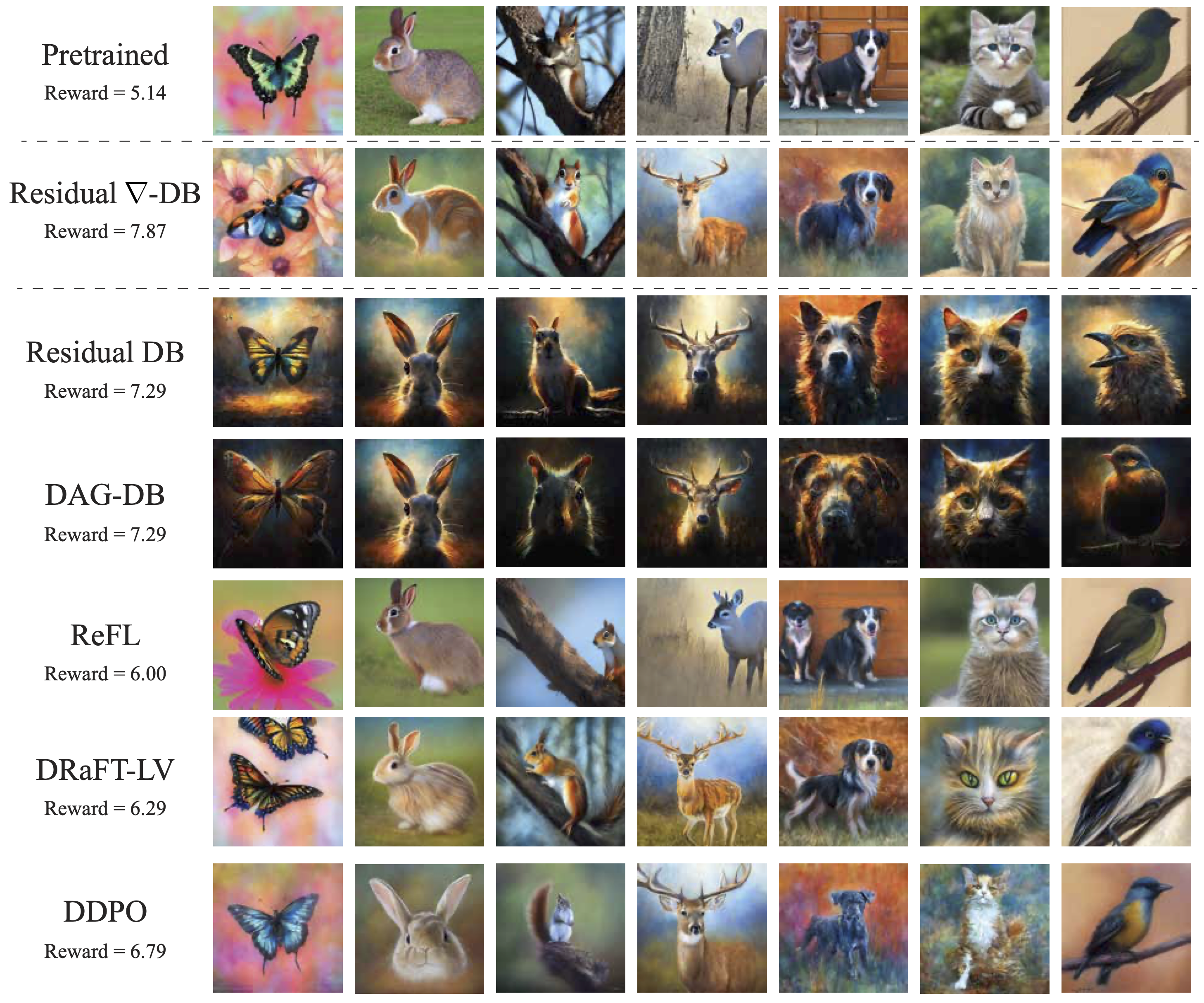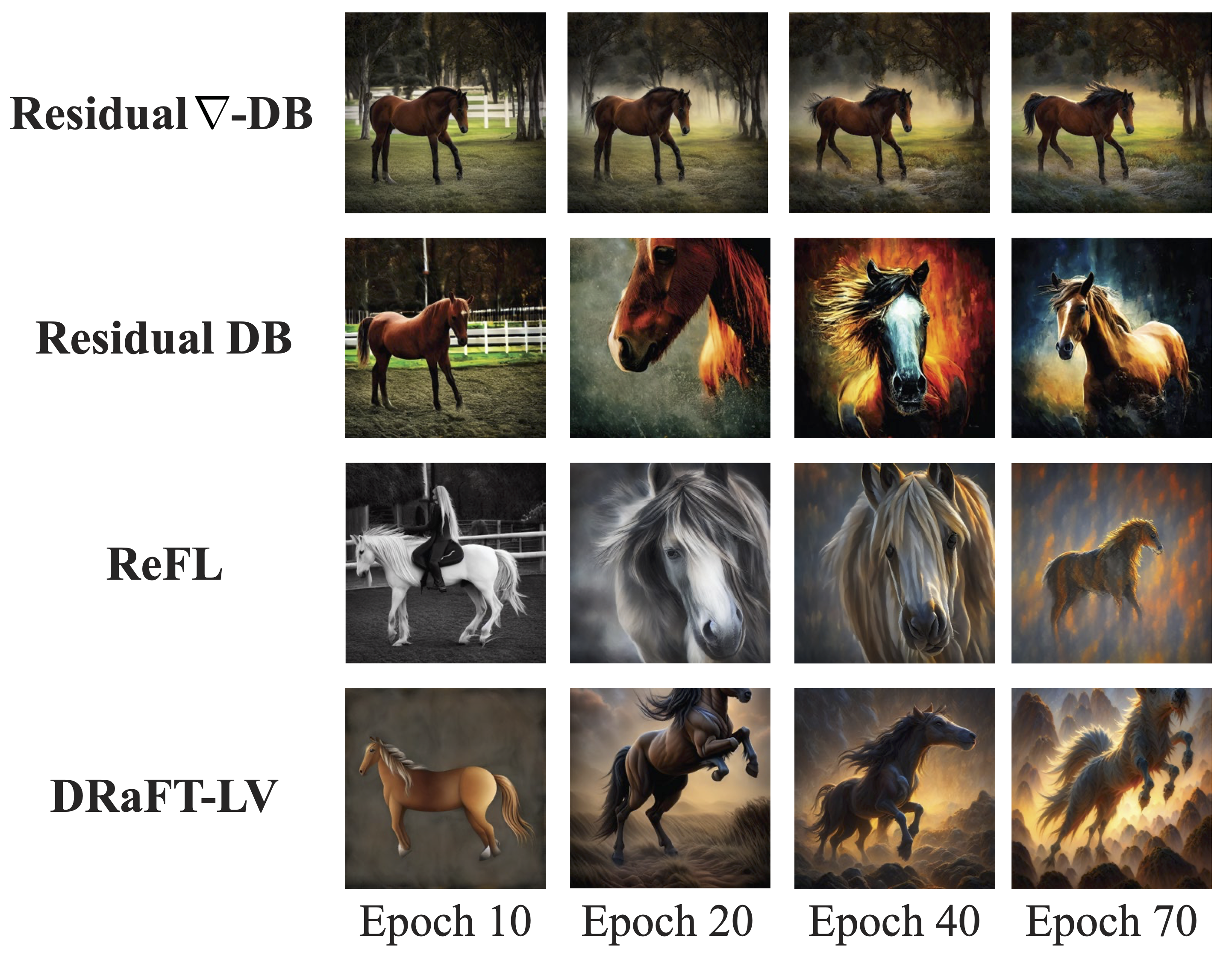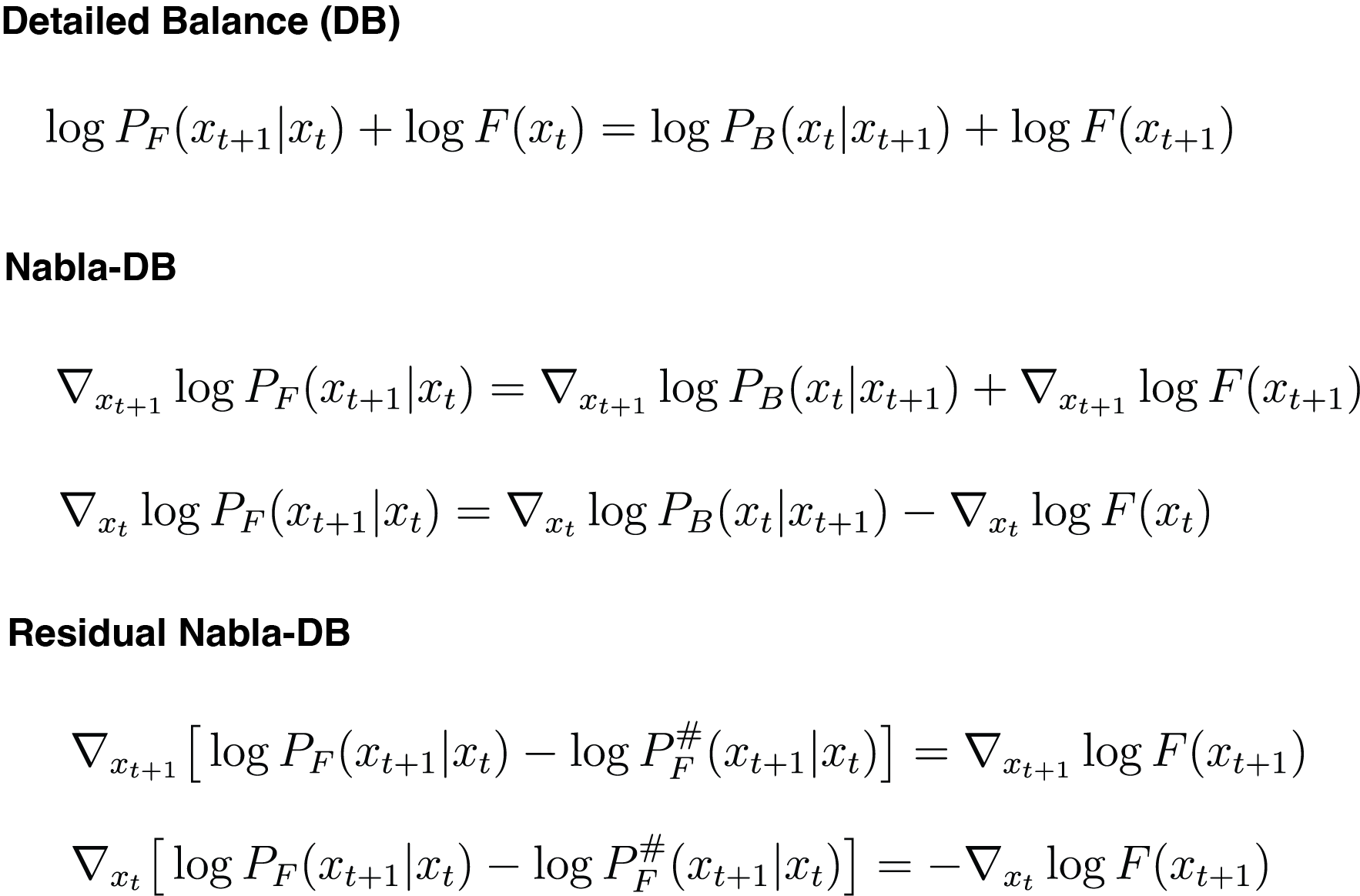While one commonly trains large diffusion models by collecting datasets on target downstream tasks,
it is often desired to align and finetune pretrained diffusion models on some reward functions that are
either designed by experts or learned from small-scale datasets.
Existing methods for finetuning diffusion models typically suffer from
lack of diversity in generated samples, lack of prior preservation, and/or slow convergence in finetuning.
Inspired by recent successes in generative flow networks (GFlowNets),
a class of probabilistic models that sample with the unnormalized density of a reward function,
we propose a novel GFlowNet method dubbed Nabla-GFlowNet (abbreviated as \methodname),
together with an objective called \graddb, plus its variant \resgraddb for finetuning pretrained diffusion models.
These objectives leverage the rich signal in reward gradients for diversity- and prior-aware finetuning.
We show that our proposed method achieves fast yet diversity- and prior-preserving finetuning of Stable Diffusion,
a large-scale text-conditioned image diffusion model, on different realistic reward functions.



